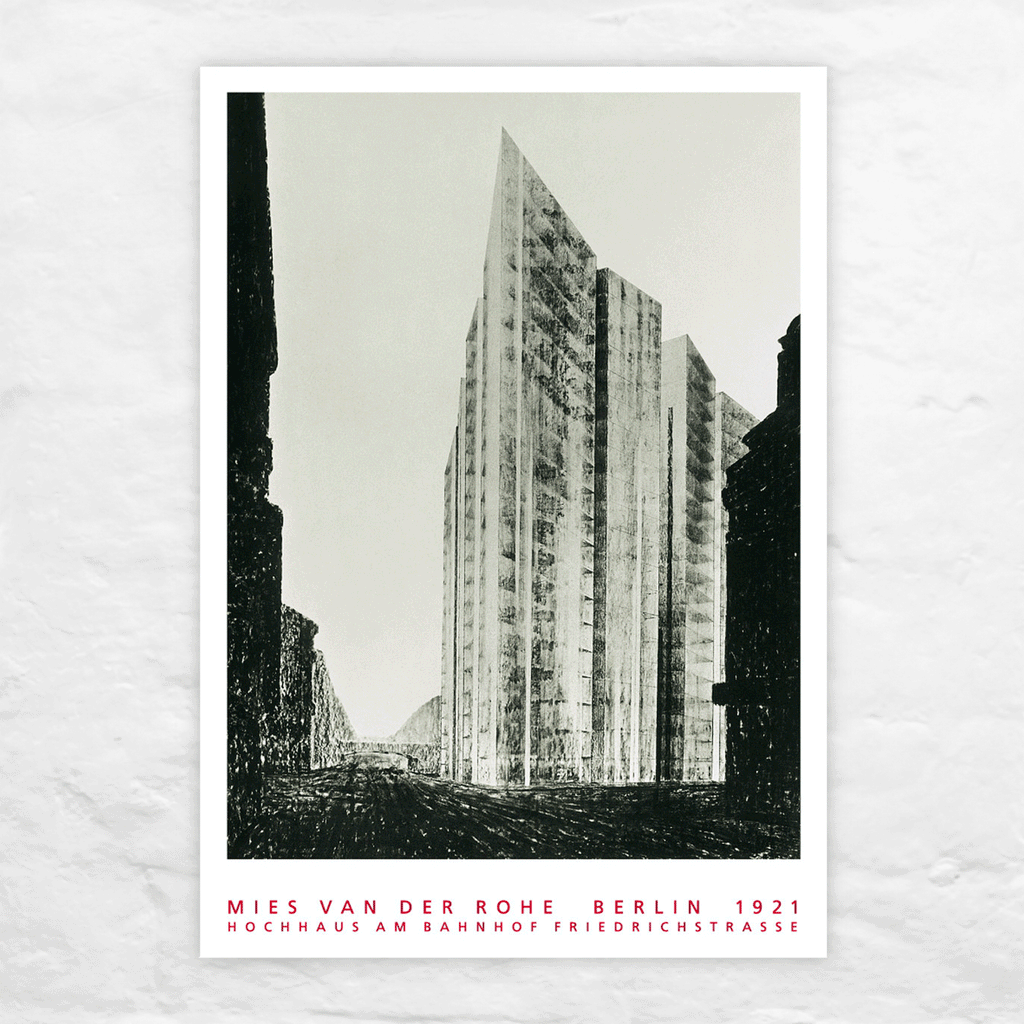Mies van der Rohe: Hochhaus Friedrichstrasse poster
£30.00
A large poster showing Mies van der Rohe's great, unrealised dream that was also a vision of the future: the Friedrichstrasse skyscraper project. Developed in response to an architectural competition for Berlin’s first skyscraper, this was one radical city centre building proposal....
As the Museum of Modern Art, New York explains: 'In 1921 this design for a fully glass-sheathed skyscraper was unprecedented. It was based on the untried idea that a supporting steel skeleton could free the structure’s exterior walls from their load-bearing function, allowing a building to have a surface more translucent than solid. Mies van der Rohe referred to this concept as an architecture of “skin and bones.”'
Approximate dimensions: 70 x 100cm.
We do sell this poster framed in black, for collection in person from Salts Mill - we don't send large framed posters by mail. If you'd like an up to date framed price, please email onlineshop@saltsmill.org.uk
About Ludwig Mies van der Rohe
Mies van der Rohe (1886 – 1969) was one of the most influential architects of the 20th century, known for his role in the development of the most enduring architectural style of the era: modernism. He created a body of work—ranging from tubular steel furniture to iconic office buildings—that influenced generations of architects worldwide. For over a century, Mies' minimalist style has proved very popular; his famous aphorism "less is more" is still widely used, even by those who are unaware of its origins.
Born in Germany, Mies' career began in the influential studio of Peter Behrens,, where Mies worked alongside other two other titans of modernism, Walter Gropius and Le Corbusier.
Almost - maybe even more? - important as the legacy of his buildings is Mies’s impact as a teacher of architecture. In Germany, was the final director of the Bauhaus until its closing under pressure from the Nazis in 1933. Not long after arriving in the USA, he was offered the directorship of the Armour Institute in Chicago (later renamed Illinois Institute of Technology), where he shaped a curriculum that influenced a generation of American architects.





